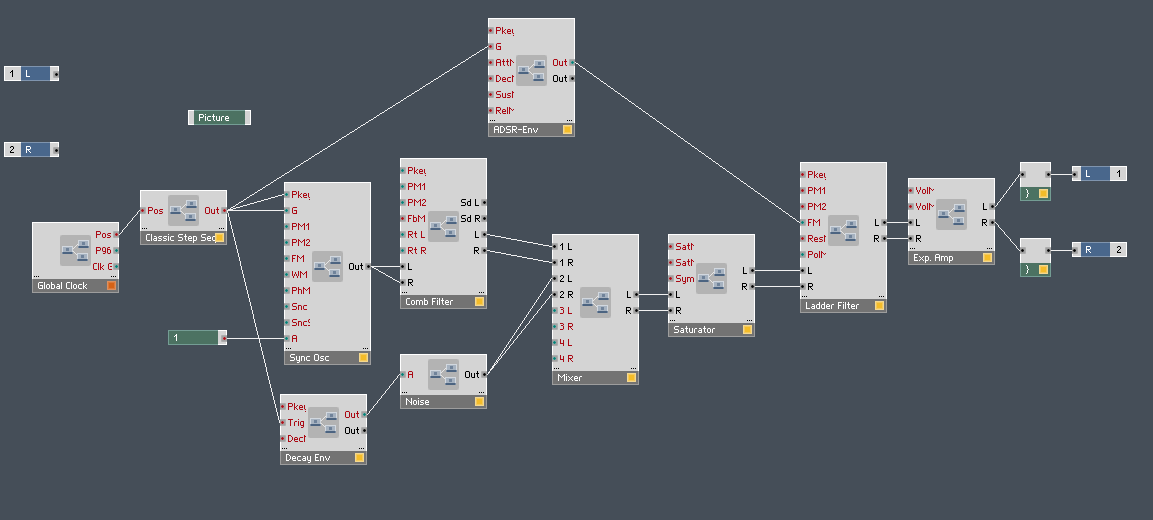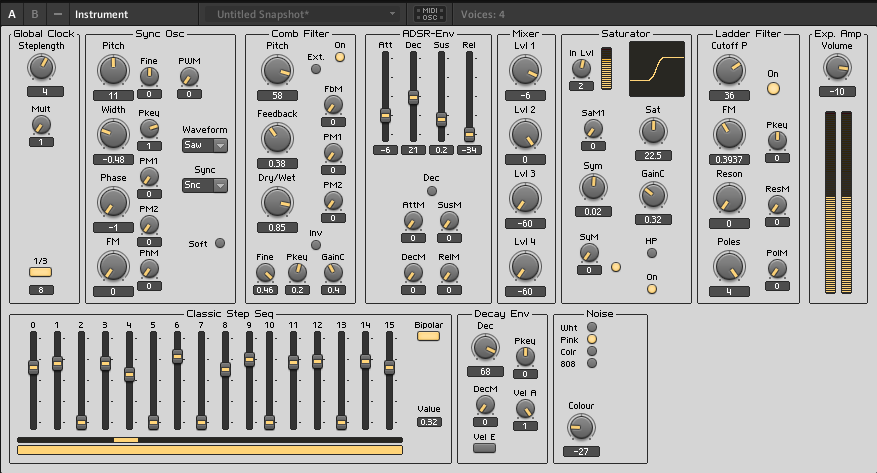Week 3 Exploring Reaktor
Alright, now that we know what’s up with the hardware world, it’s time to go digital. The advantage of making a sequencer on a virtual platform like Reaktor is that there are no physical imitations to the structure of your instrument. Moreover, you have the opportunity to radically redesign your instrument over and over in a matter of moments. Part of this week’s work was to brainstorm possible sequencing ideas and features to include in my design.
This app is not only great to design virtual instruments but also an environment that stimulates sound experimentation. Reaktor is made of different layers. On the topmost level we have ensembles, which can made of different instruments, a couple modules or even just a few custom made cells. Then we have instruments and blocks, which can be connected to each other to exchange control or audio signals. Instruments can be made out of cells, which can compute anything, from a raw source wave to a programmable table to send gate signals. At the bottom level we have core cells, which allow you to program in Reaktor at the dsp level.

A simple synth I created in winter 2015/16 in Reaktor 5

Finally, I got my hands on a copy of Reaktor 6! I am beyond excited. Compared to version 5, this new installment of Reaktor comes with an exciting feature called “Blocks”. Realtor Blocks are elements similar to Eurorack modules, which can be configured and routed between each other in many different ways to give life to synthesizer systems of any kind. This gives sound designers and composers a great freedom of expression, at the cost of some increased complexity.
The new GUI in Reaktor 6
